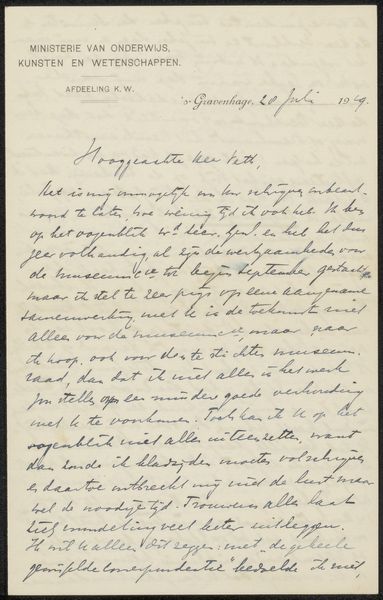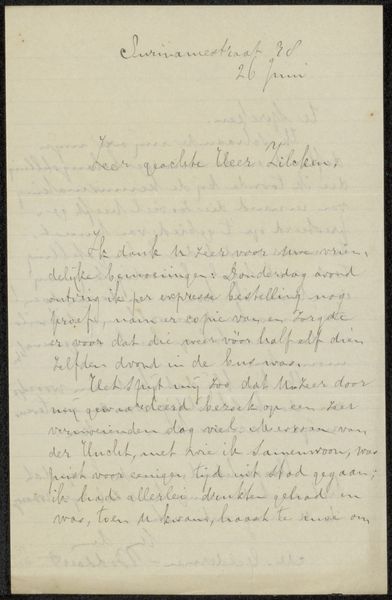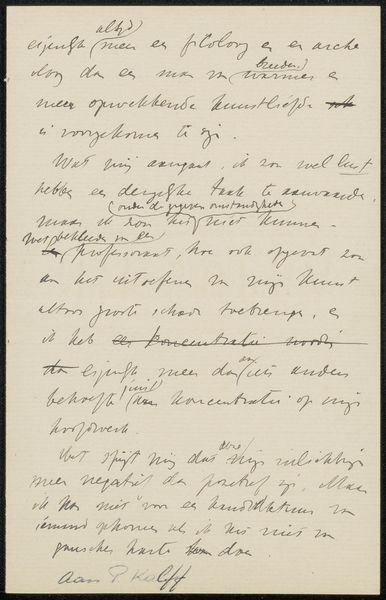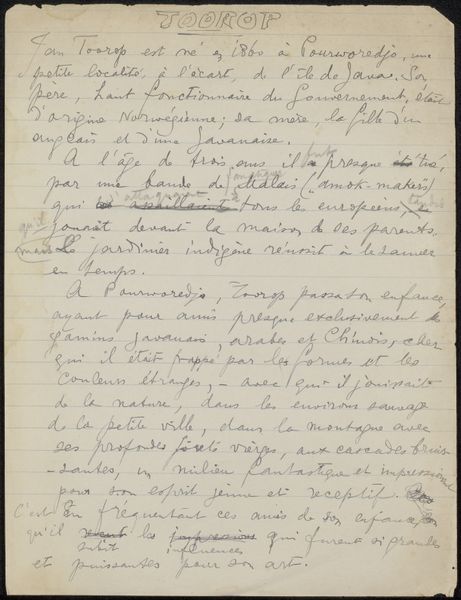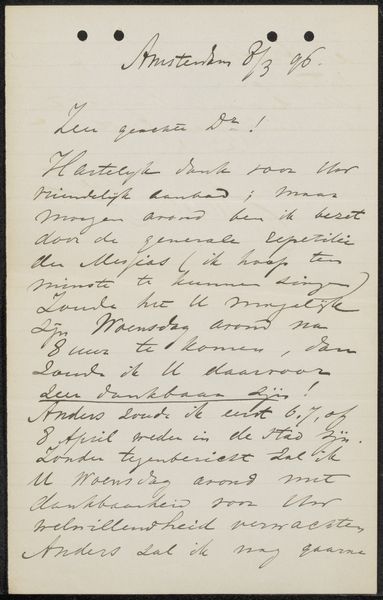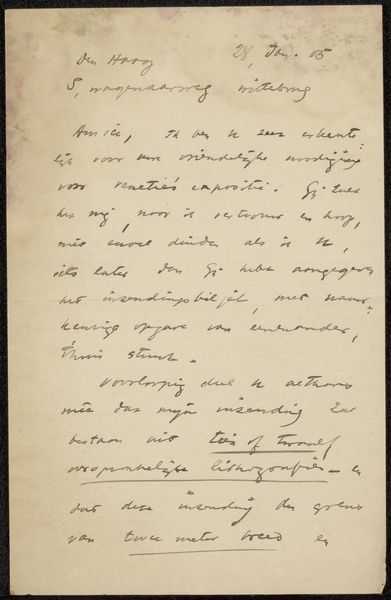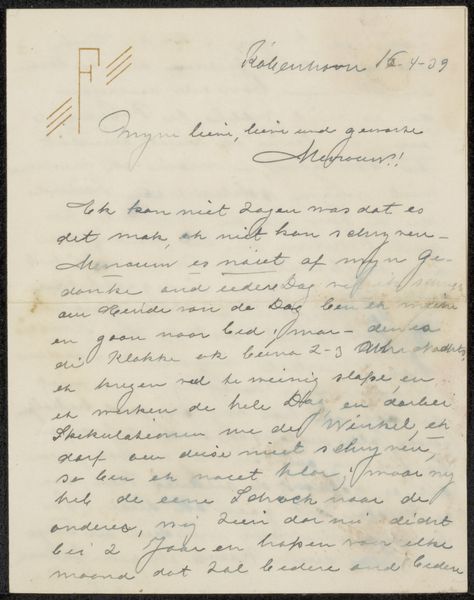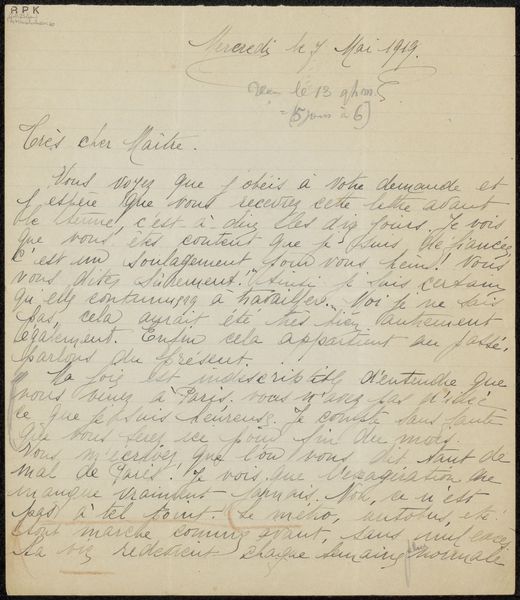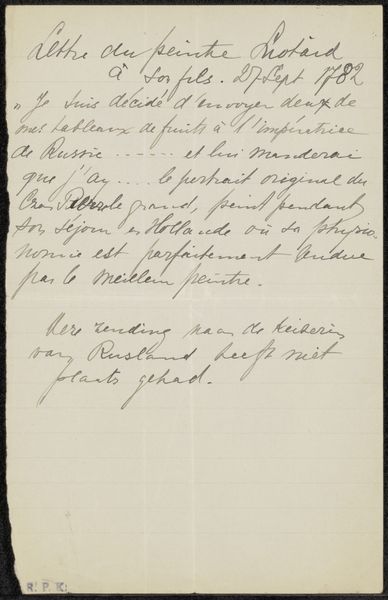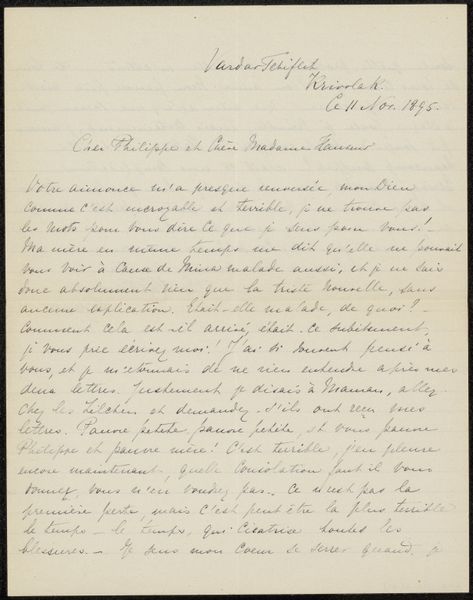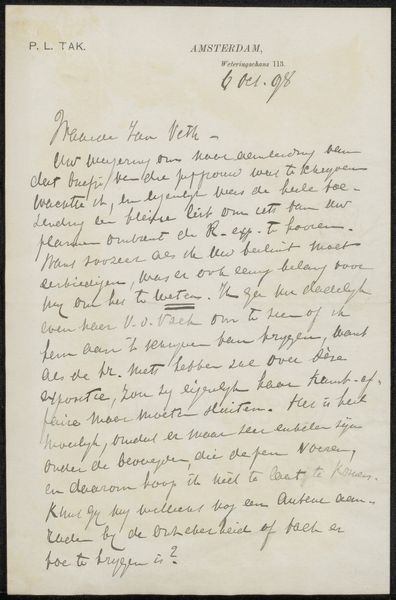
drawing, paper, ink, pen
#
portrait
#
drawing
#
paper
#
personal sketchbook
#
ink
#
ink drawing experimentation
#
pen work
#
pen
Copyright: Rijks Museum: Open Domain
Curator: Here at the Rijksmuseum, we have a piece titled "Brief aan Pieter Haverkorn van Rijsewijk," attributed to Willy Sluiter, and thought to have been created sometime between 1903 and 1917. Editor: It's a letter, or at least, the *image* of one. At first glance, it’s very dense—filled with handwriting from top to bottom, evoking a strong sense of intimacy and history. Curator: Indeed. Sluiter utilized pen and ink on paper. It serves as a personal communication, probably penned in 1903 from Katwijk aan Zee as you can see at the beginning, hinting at a specific moment and context. Sluiter wrote to communicate that his drawing had been installed in Museum Boijmans van Beuningen Editor: What does this specific communication reveal, beyond the formalities of correspondence? Whose stories are interwoven, and are they given the attention and understanding that they deserve? This type of written art may open many hidden doors, just waiting to be discovered! Curator: Considering the era and Sluiter's artistic circle, the letter gives insight into artistic networks and the means of communication. We also know Sluiter wrote it to Pieter Haverkorn van Rijsewijk Editor: It's important to acknowledge how accessing this kind of private correspondence shapes our contemporary view of historical figures like Sluiter. The act of reading this note becomes political. I can understand the original social relationships better, if not completely! Curator: Precisely. We see art not as isolated masterpieces but within a complex web of relationships. It reveals the daily lives, influences, and transactions of the early 20th-century art world. Editor: Exactly, and viewing the letters through an intersectional lens invites a profound questioning of narrative. I wonder, what were the hidden aspects of artistic work and private life? I think about it every time when observing those ink and pen sketches that could be about everything and, in fact, mean something for each observer. Curator: Ultimately, examining a simple letter like this helps us unpack a complex era. Editor: Absolutely, transforming our understanding beyond the surface and helping us connect with historical realities.
Comments
No comments
Be the first to comment and join the conversation on the ultimate creative platform.

